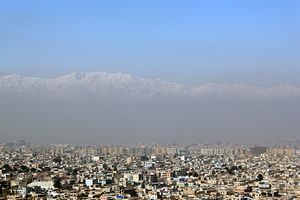As the American-led intervention enters its 15th year, Afghanistan’s capital, Kabul, remains an enigma. For many Westerners, Kabul is a mercurial place, a political entity negatively associated with the longest war in American history. Though now the largest city in Central Asia — a teeming valley of nearly five million humans — few conceive of its geography or location: what it looks like to survey the city from its prominences, navigate its warren of muddy streets, visit its tombs and see the relics of past interventions. The truth of Afghanistan’s capital is obscured under a pall of violent images and stories of corruption. The city’s identity is lost in the dimming light of hope. This is not a misunderstanding of Kabul, for conflict and corruption and fading hope certainly exist; rather it is an incomplete picture, one that does a disservice to the city, its inhabitants, their place in history, and their future in a globalized world.
At the core of Kabul’s identity is a rich cultural landscape centered around places of deep historical significance. These places, and the collective memories they invoke, anchor Kabul to its past and provide a basis for understanding what the city is at present and what it might become in the future — a future which will not be determined by the West, but by Kabulis themselves.
Tyrell Mayfield has twice served as an advisor to senior Afghan officials and is currently writing a book about his experiences. He is an editor at The Strategy Bridge. You can follow him on Twitter at @tyrellmayfield.
The views expressed in this article are those of the author and do not reflect the official policy or position of the USAF, the DoD, or the U.S. Government.














































